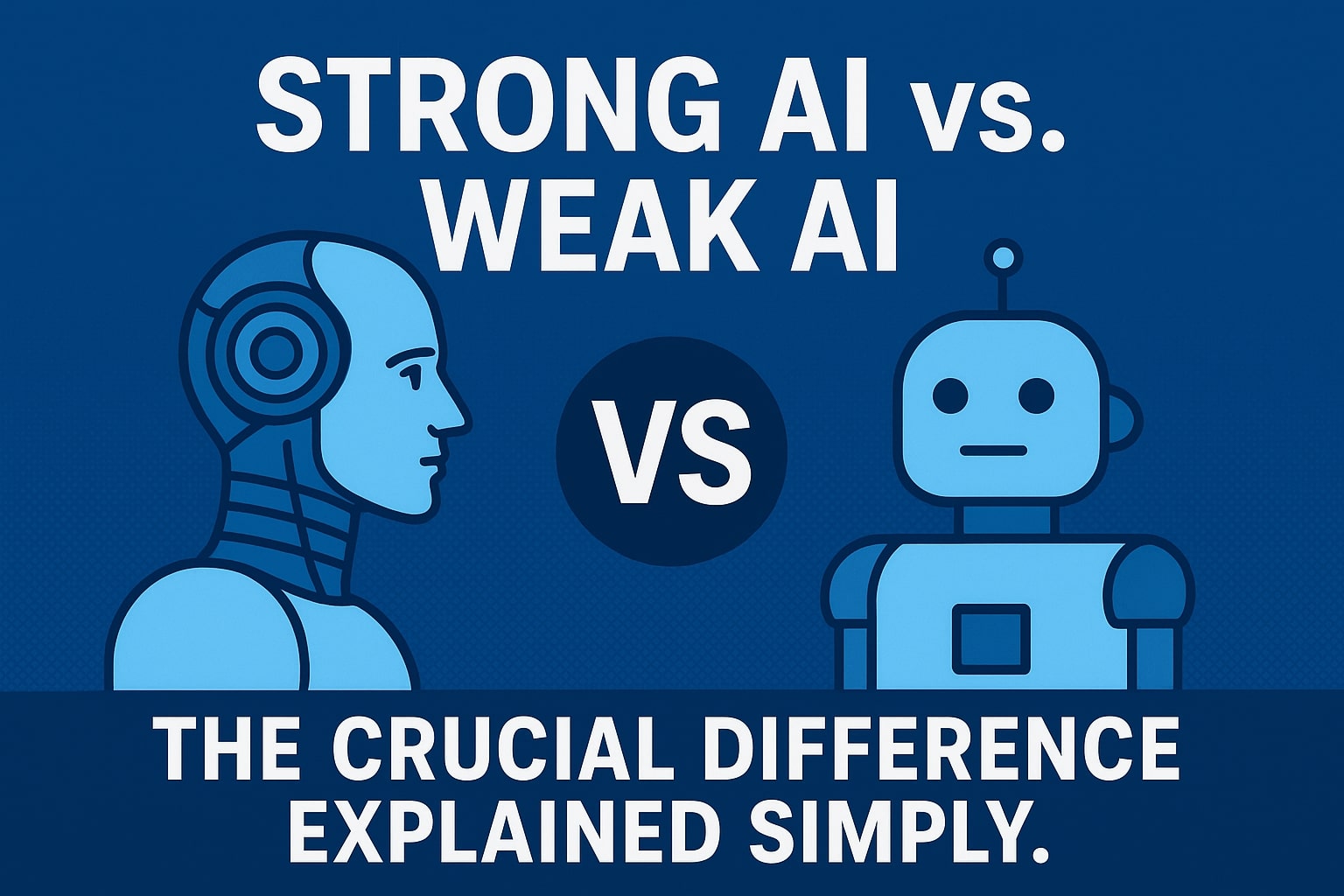When discussing artificial intelligence, you’ll often hear the debate about Strong AI vs. Weak AI. These aren’t judgments of quality, but differences in scope and ambition. Understanding this distinction is fundamental to having informed conversations about AI’s present and future.
Weak AI in Practice (Narrow AI)
Weak AI, also known as Narrow AI, refers to artificial intelligence that is designed and trained for a specific task. It operates under a limited set of constraints and is focused on doing one thing exceptionally well.
The key thing to remember: Weak AI can simulate human intelligence for its specific task, but it does not possess consciousness, self-awareness, or genuine understanding. It is a sophisticated simulation of intelligence. According to Stanford’s overview of AI, Narrow AI underpins almost every modern AI system we use today.
Examples of Narrow AI You Already Use
- Apple’s Siri or Amazon’s Alexa
- Google’s search algorithm
- Netflix’s recommendation engine
- Self-driving car vision systems
- ChatGPT and other large language models
AGI: The Vision of Strong AI
Strong AI, also known as Artificial General Intelligence (AGI), is the hypothetical concept of a machine with human-level intelligence. Unlike Weak AI, Strong AI could understand, learn, and apply knowledge across any problem domain. As IBM Research explains, this is the long-term goal of AI development, though it remains out of reach today.
The key thing to remember: Strong AI would possess consciousness, self-awareness, and sentience. It could reason, plan, and transfer knowledge from one domain to another seamlessly, just like a human.
Strong AI in Science Fiction
- Data from Star Trek: The Next Generation
- Sonny from I, Robot
- The androids in Westworld
Strong AI vs. Weak AI: A Simple Comparison
| Aspect | Weak AI (Narrow AI) | Strong AI (AGI) |
|---|---|---|
| Scope | Excels at a single or limited range of tasks | Can perform any intellectual task a human can |
| Consciousness | No consciousness or self-awareness | Would possess consciousness and self-awareness |
| Learning | Learns only for its specific domain | Can learn and transfer knowledge across domains |
| Status | Exists everywhere today | Purely theoretical; does not exist |
| Example | A chess-playing AI | A human-like robot that can cook, discuss philosophy, and paint |
In short, all the AI we interact with today is Weak AI. Strong AI vs. Weak AI remains a crucial distinction: one is here now, the other is still a vision. For a deeper dive, check out MIT Technology Review’s coverage of AI progress.
Want to explore the future of AI? Read our deep dive into Artificial General Intelligence (AGI) and how close we are to achieving it.
